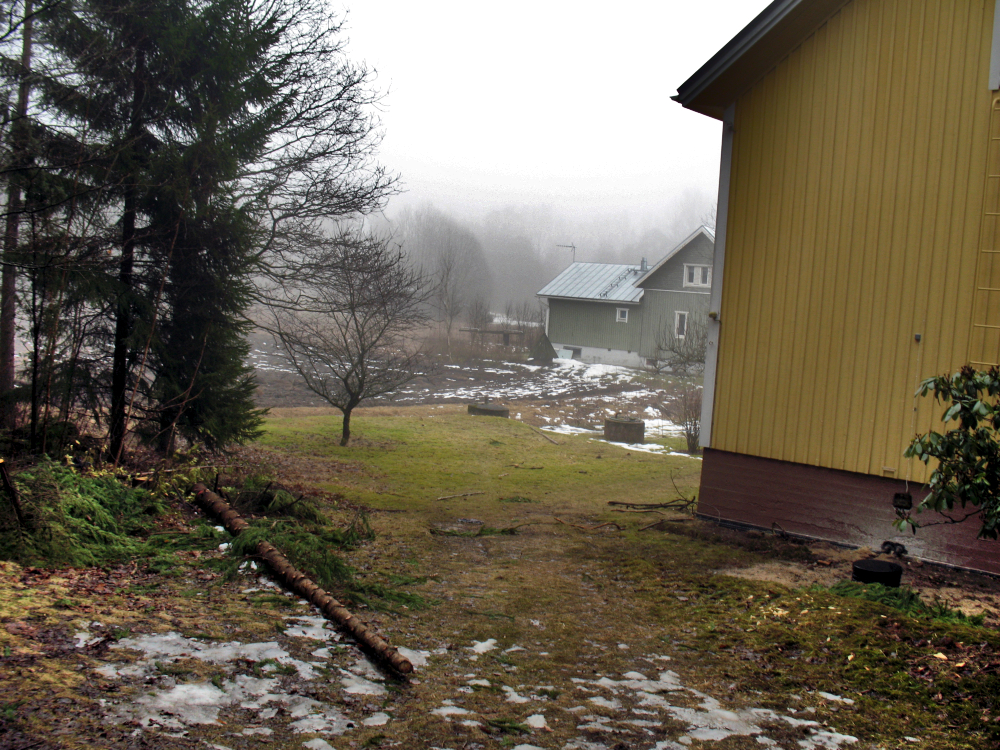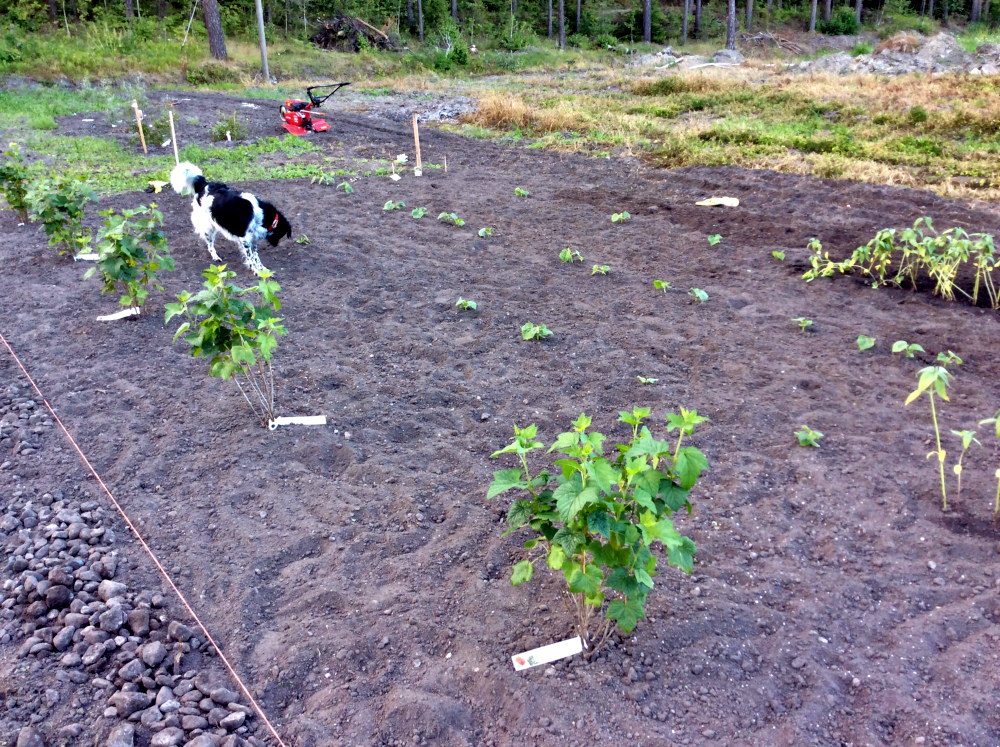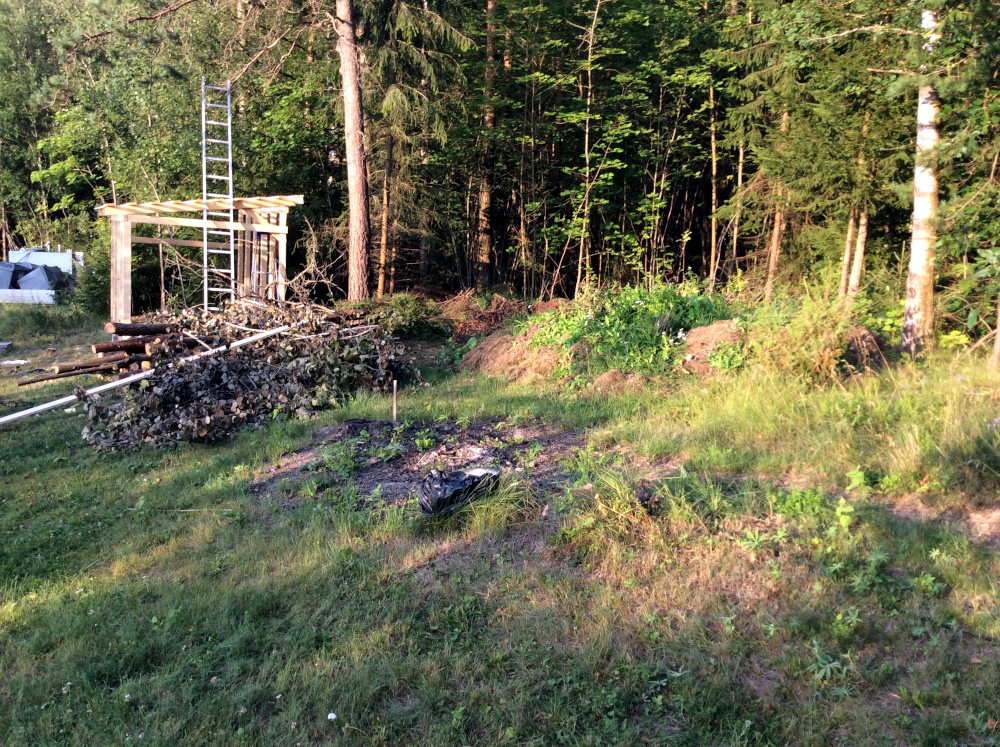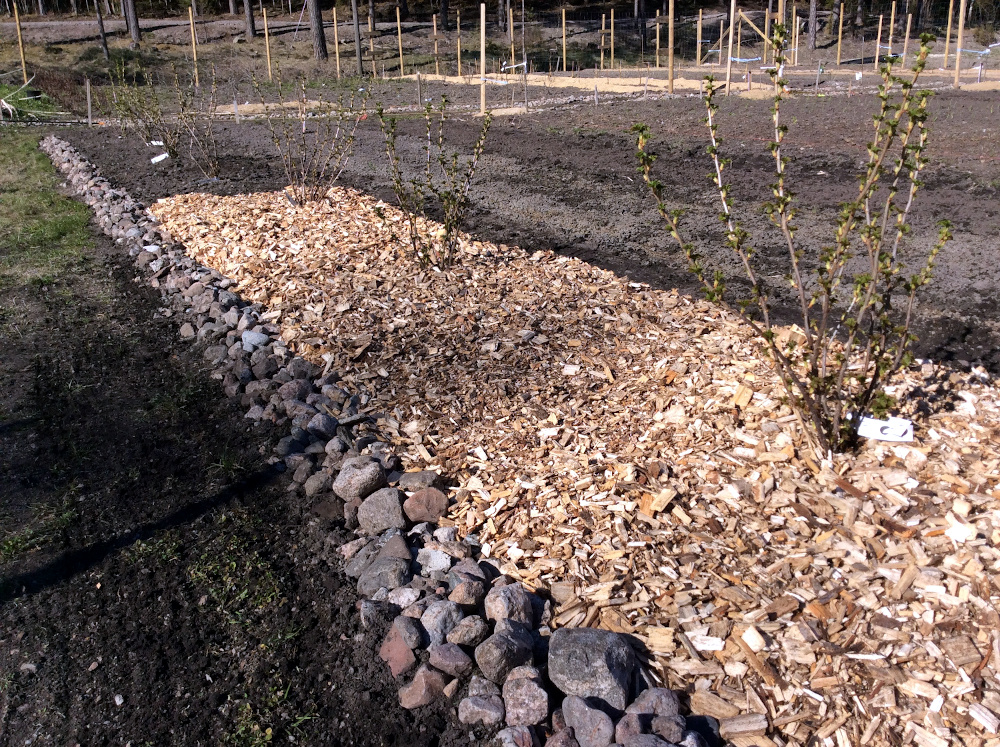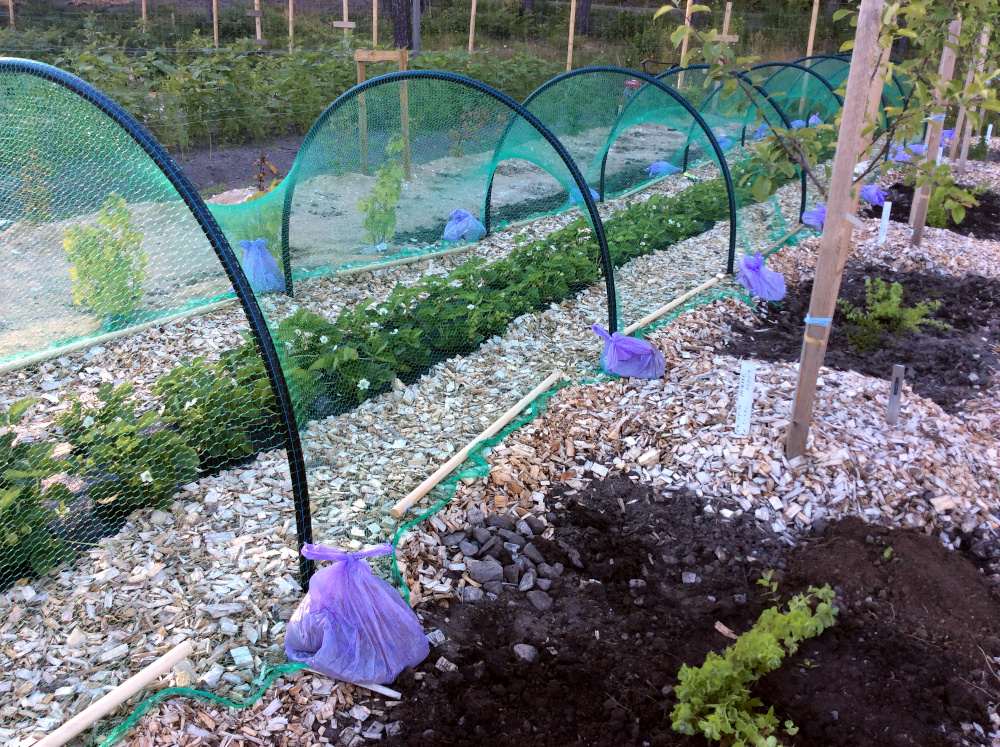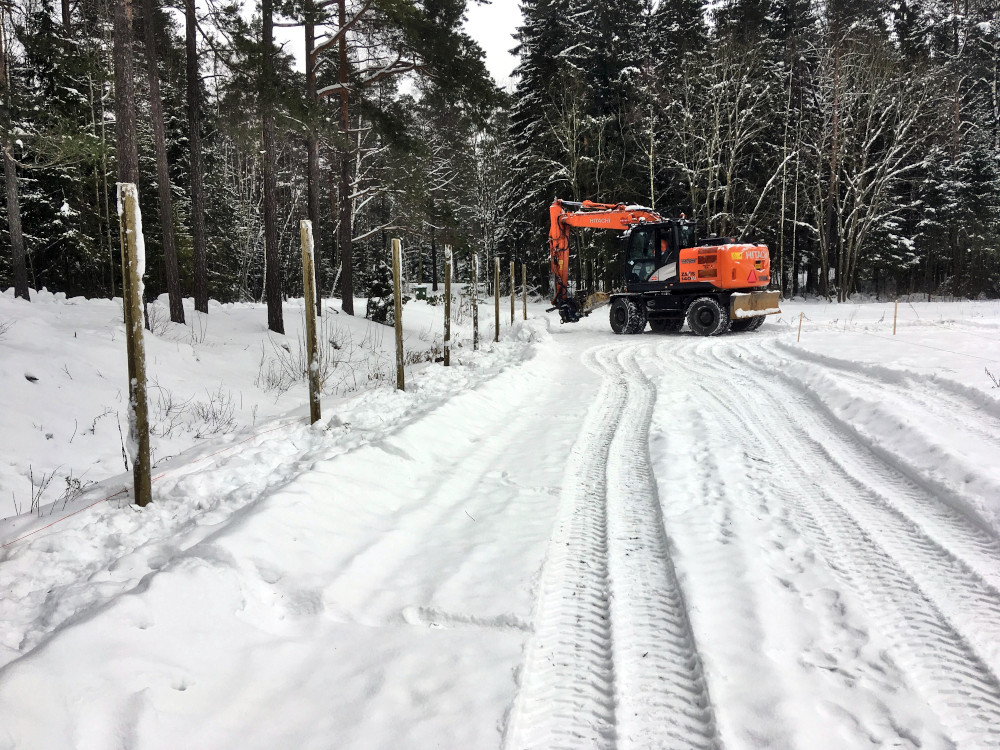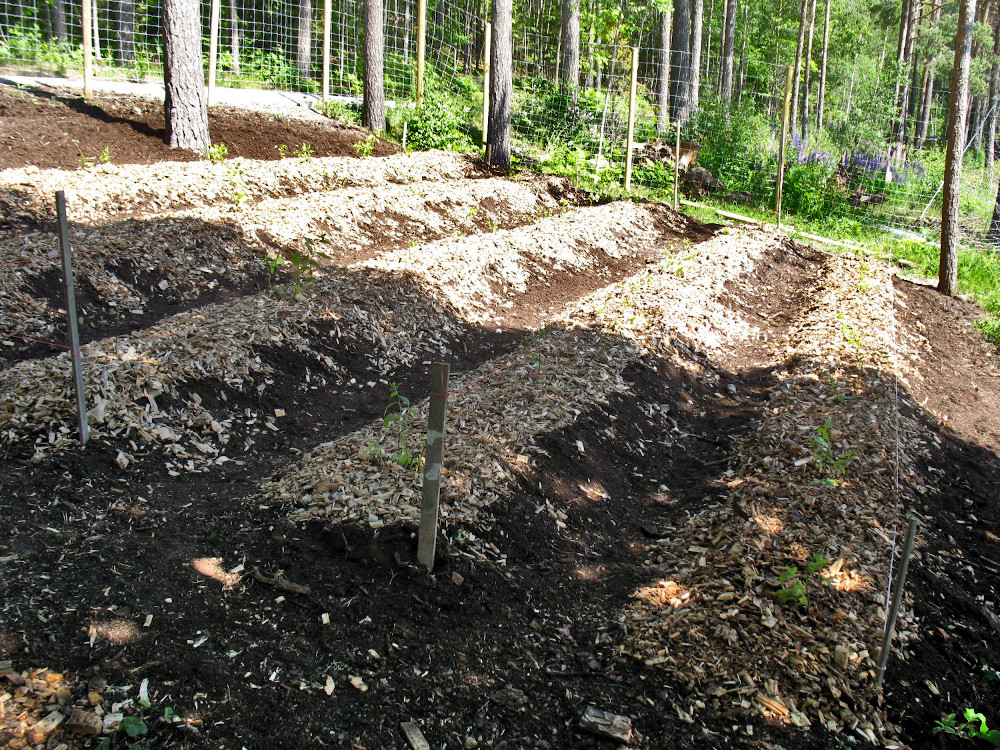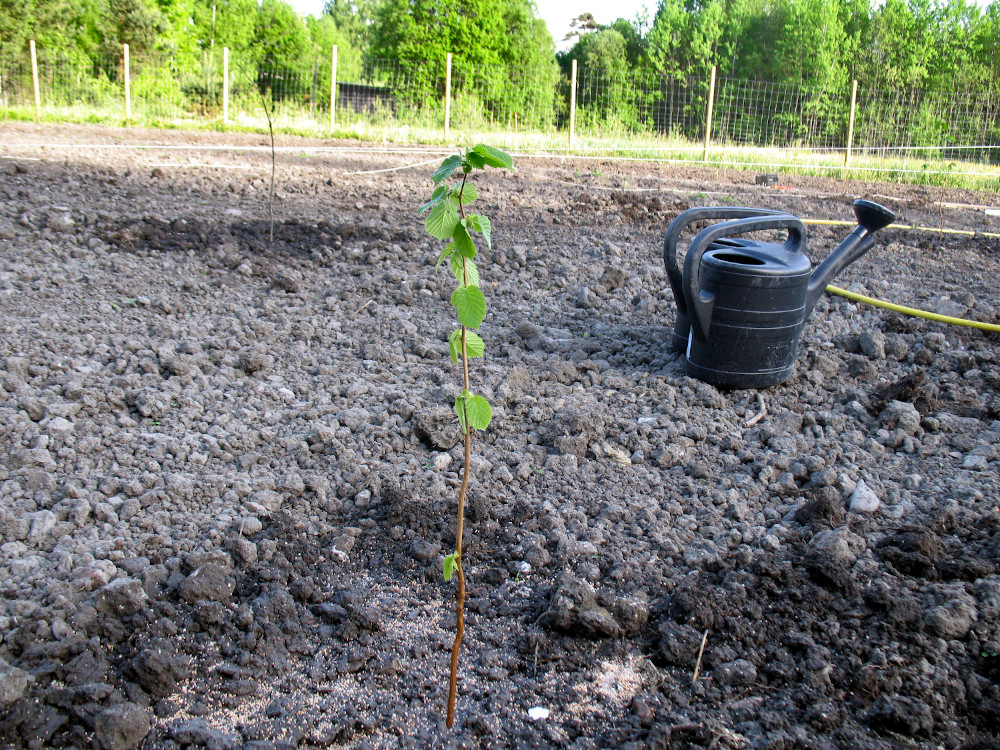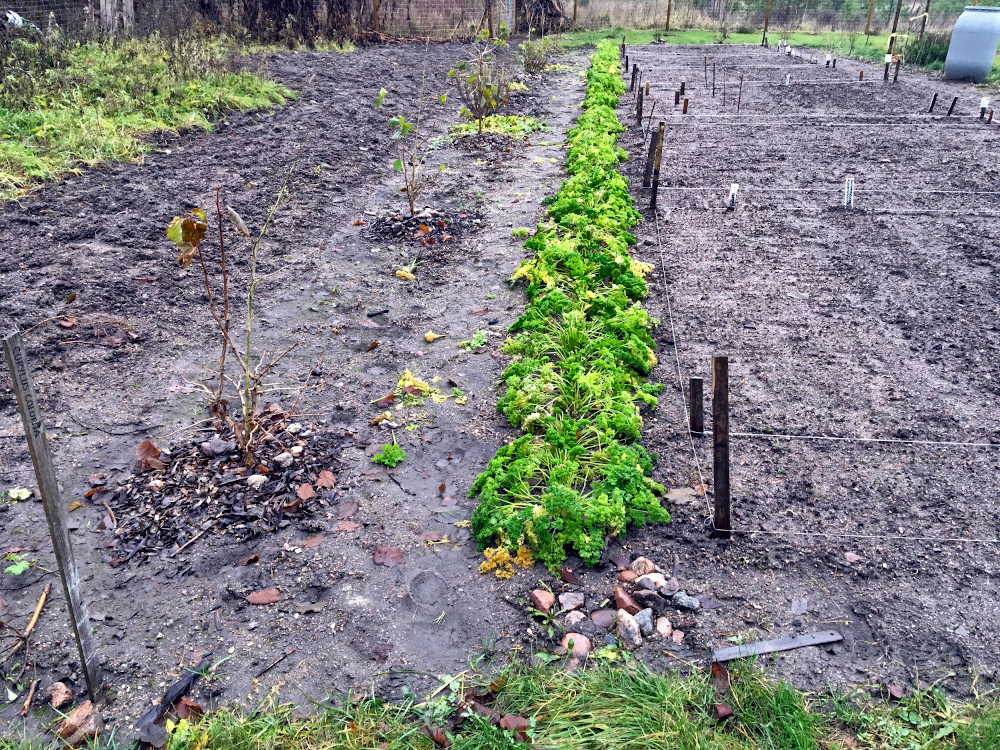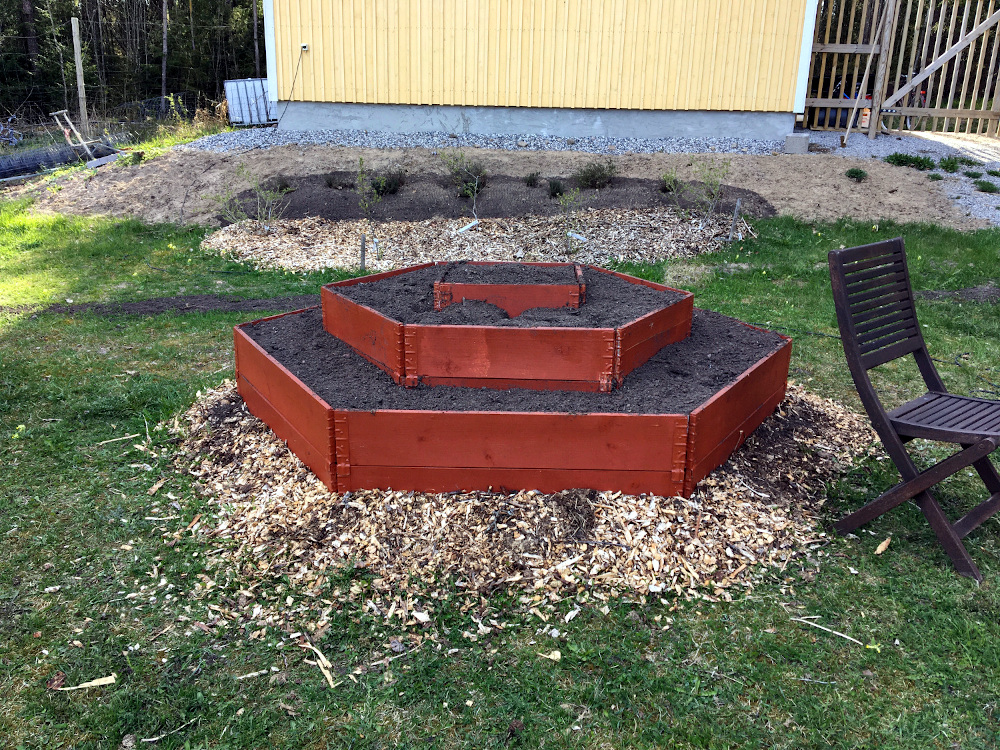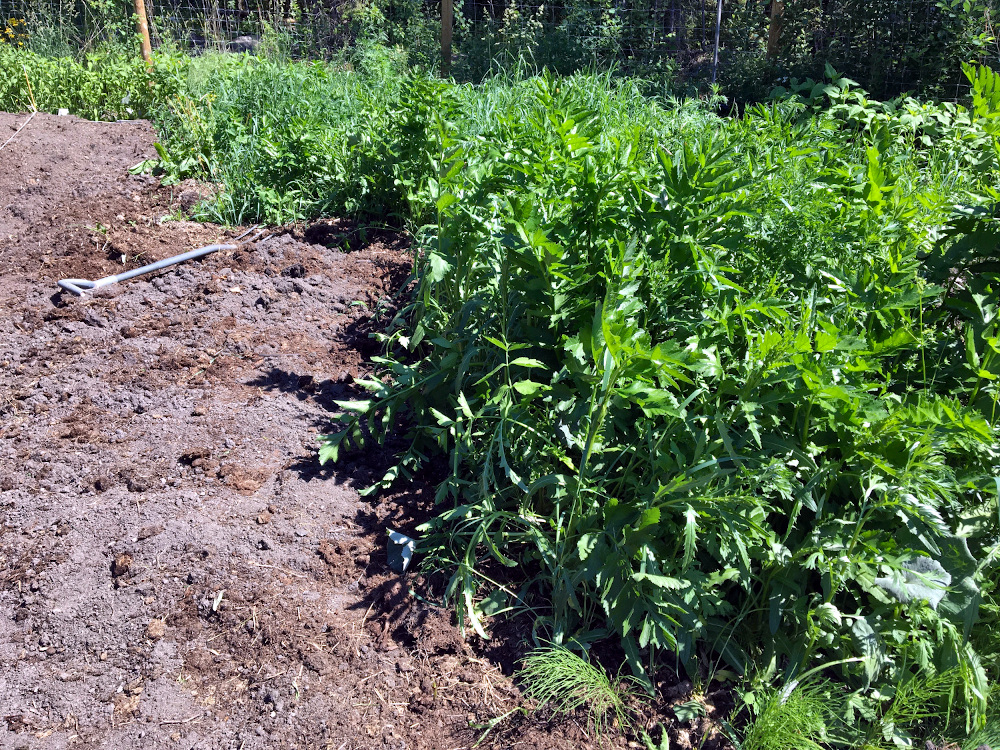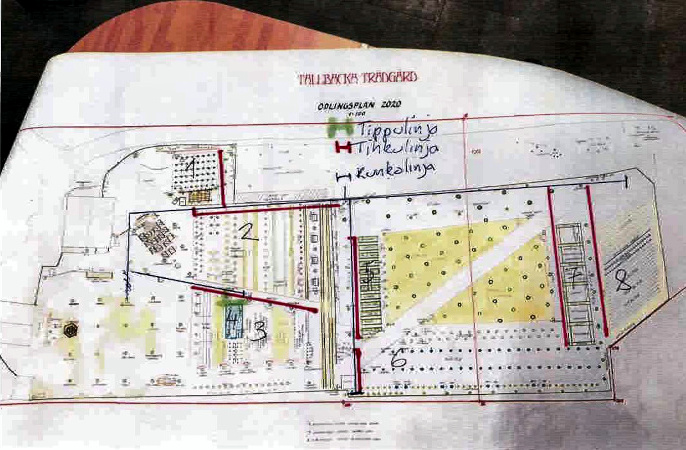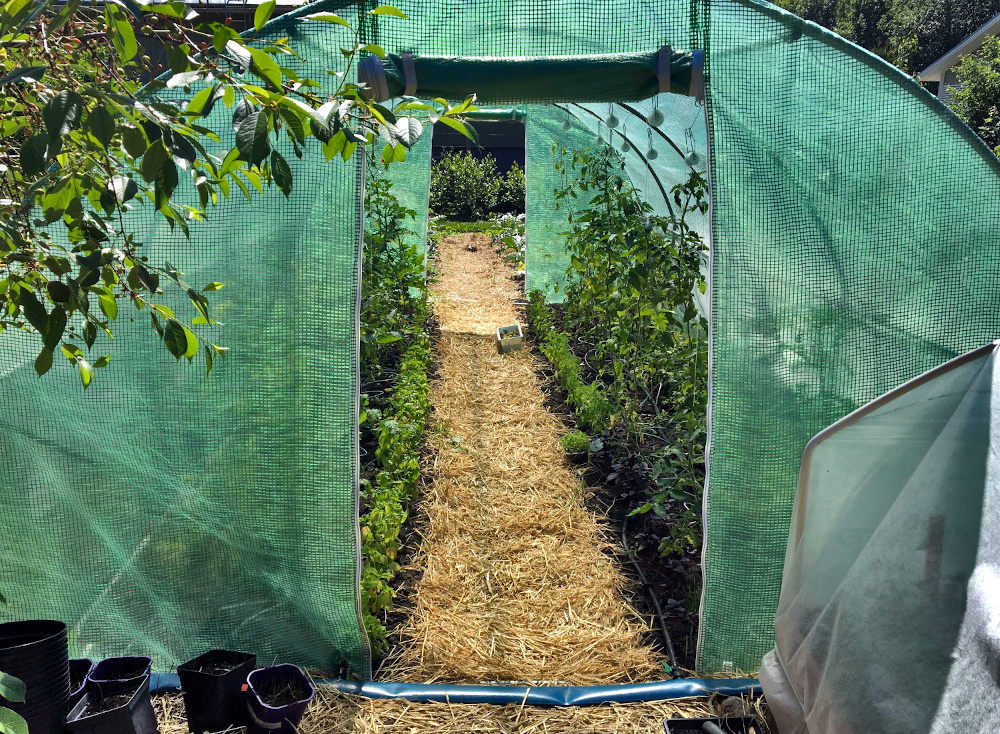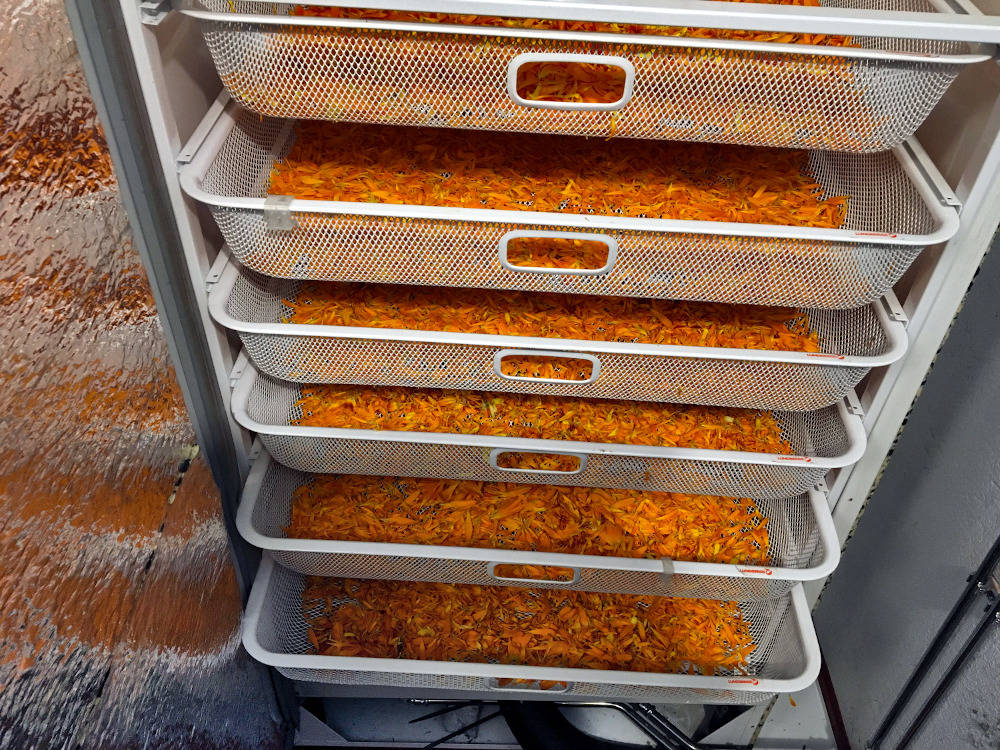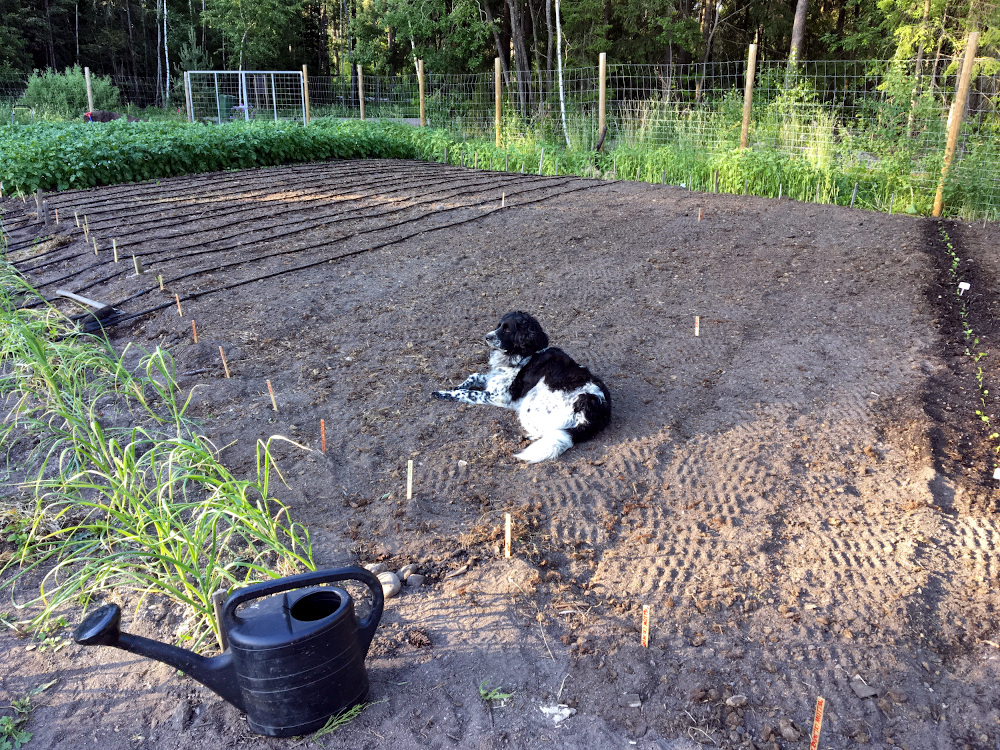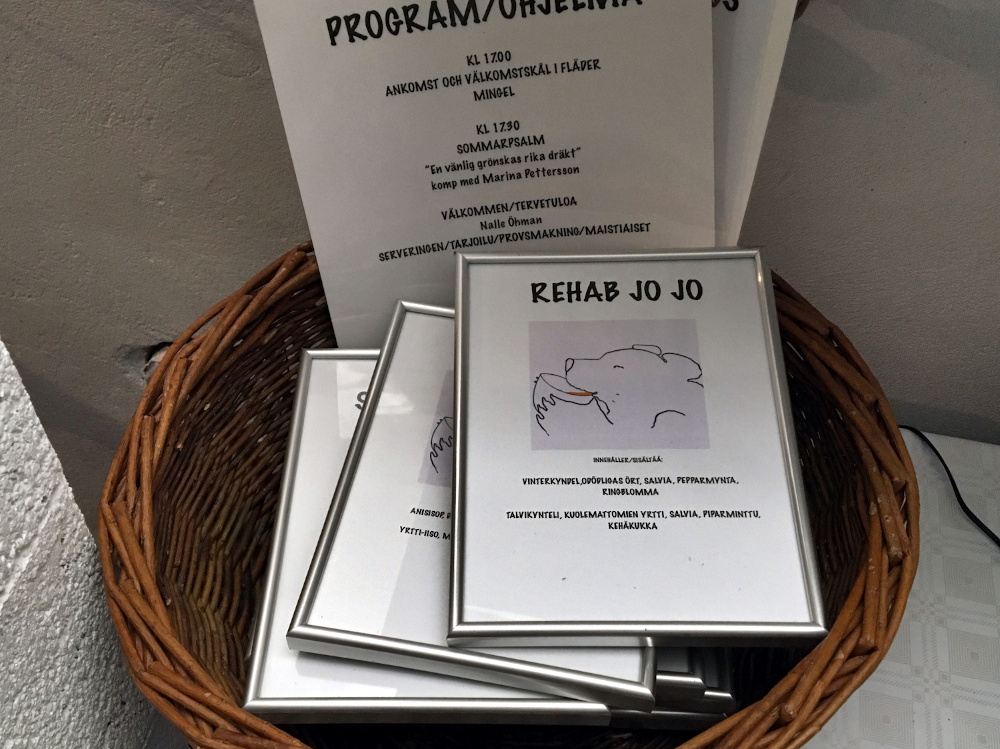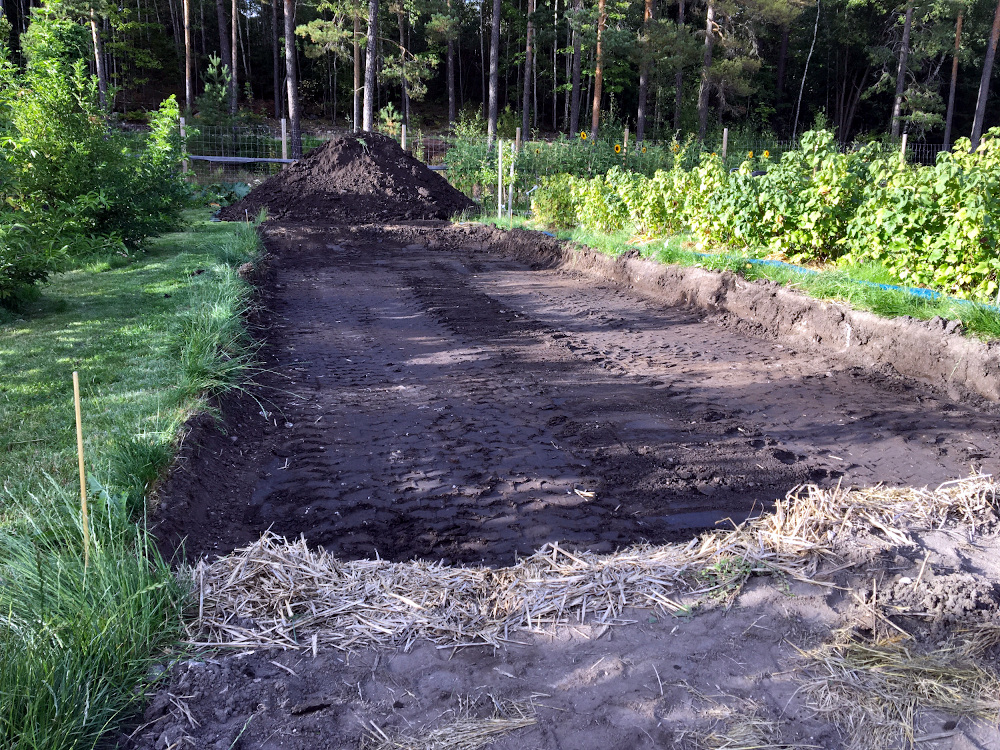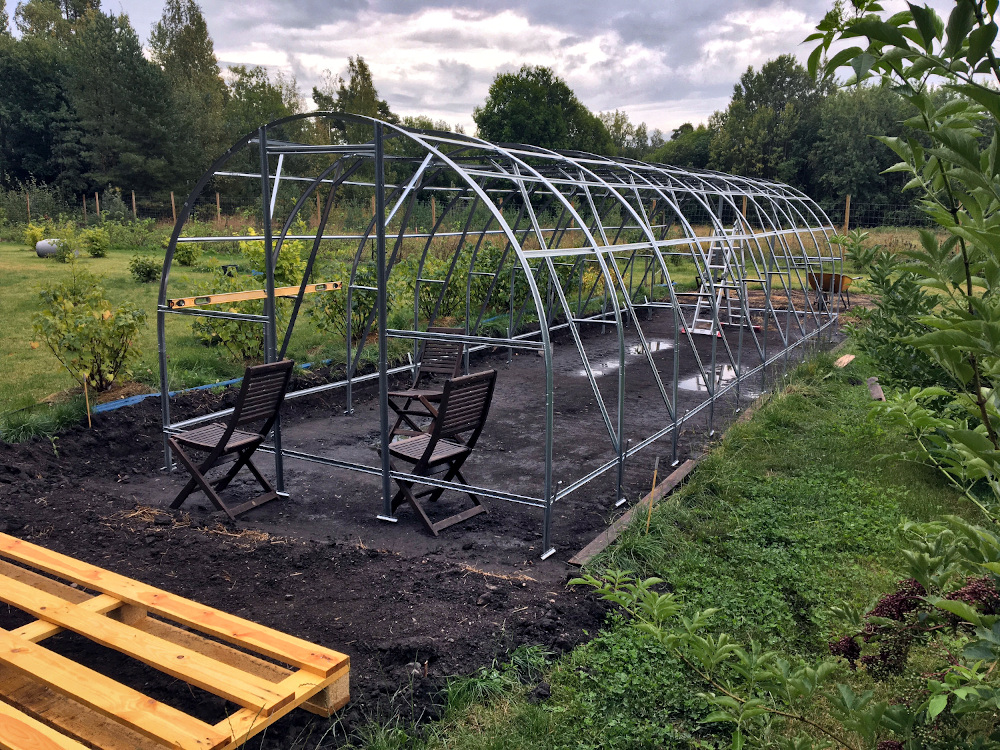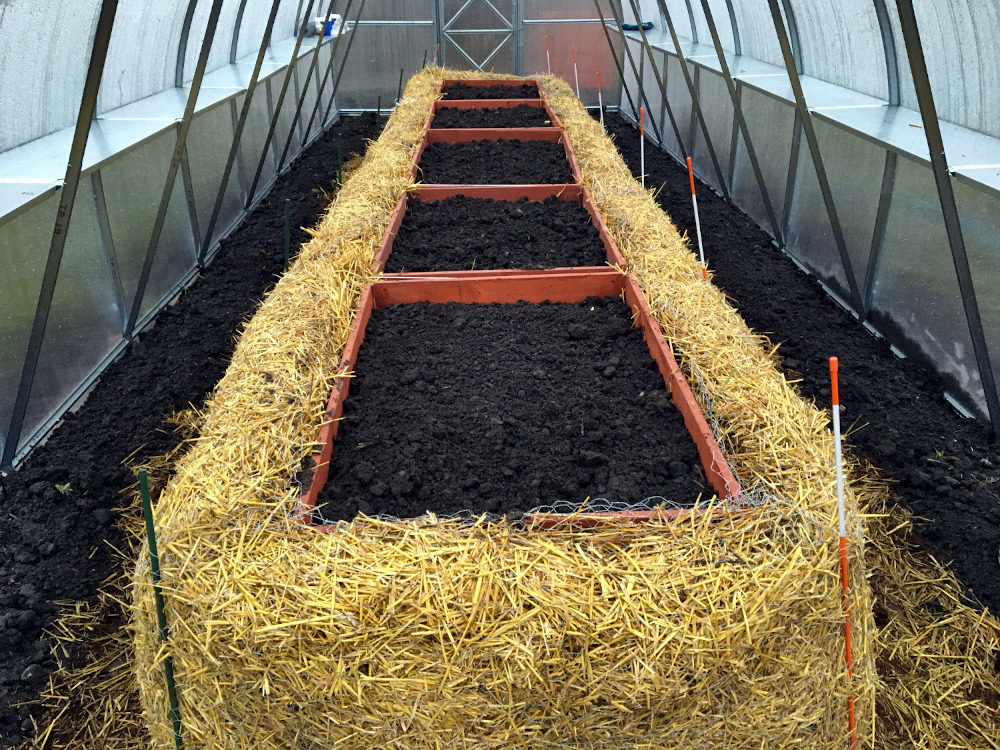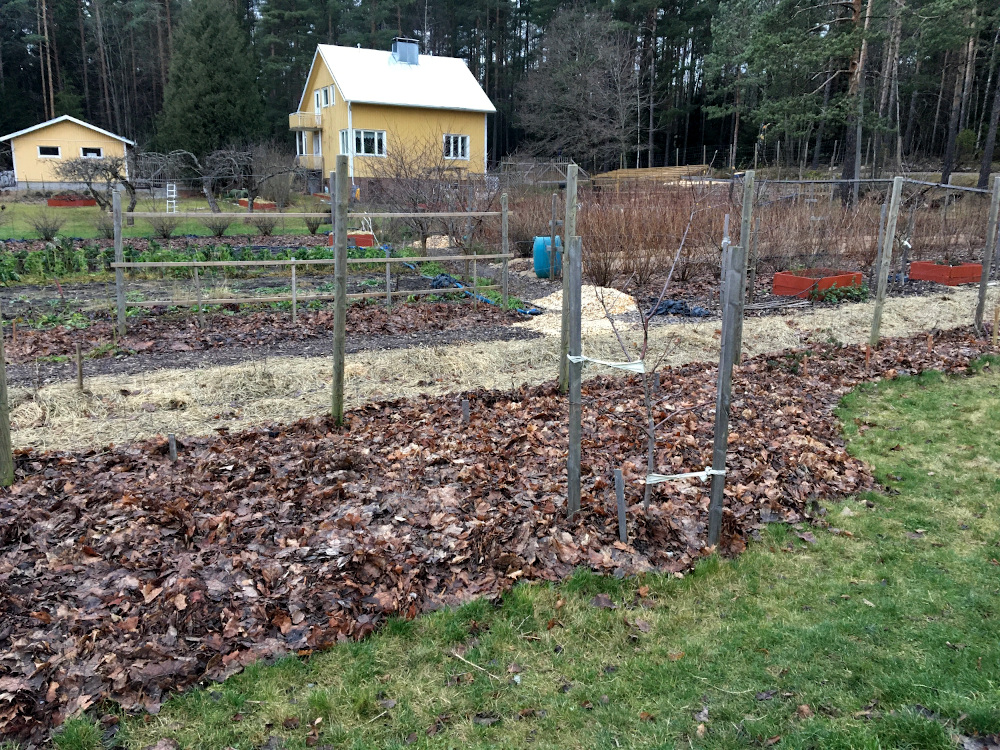THE STORY OF TALLBACKA GARDEN ACCORDING TO OUTI 2015 - 2020
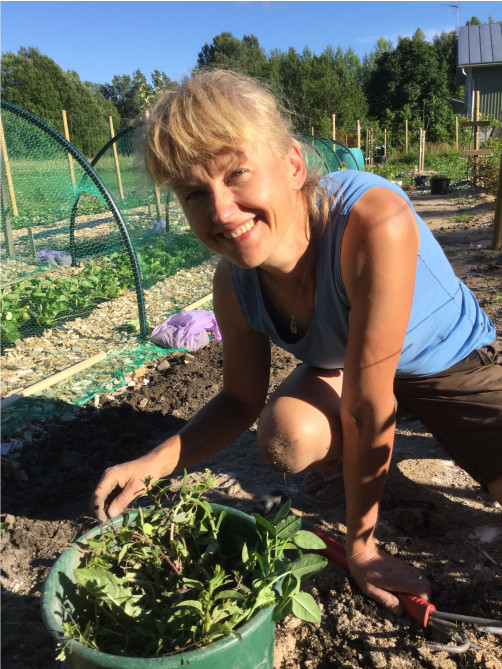
The Tallbacka property, which is in the Rödjan district of Pargas/Parainen town, changed owners on 1st of August 2015. A new home was the goal but also a plot big enough for a garden. There were a few other properties in the area having the same specs but they were not particularly suited for cultivation. Tallbacka felt like home almost immediately, it was the right distance from town but still passably isolated and the lie of the land felt right. To the north there was a ridge and the soil quality seemed good. This garden had been cultivated before (the house was built in 1957) but the evidence for this had all but vanished. The field was covered in man-high mugwort (wormwood) and lupins. The berry bushes had lost the will to live.
What a great opportunity to do just about anything!
There were a few apple trees in the garden, an oak and a fine beech tree (unusual in these parts). The old wells were still there so we could still use the water from them. At some time an ‘unnecessary’ ditch had been dug between the house and the field which we had filled in. The field was ploughed in the autumn and in the spring of 2016 we started a helter-skelter ride into our dream. At that time the plan was no more than to grow “as many berry bushes and as many types as possible”.
2016
It was hard work and took a long time to clear the ground and restore the soil for cultivation. There were perennial weeds, bush wood and the usual annual weeds in endless amounts. Slowly and surely, using evenings and free days from work, the amount of arable land increased. We bought our first plants on the 16th of April. My plans were in no way ready and I never thought of using any unusual or possibly even cleverer ways of working. One thing was certain, however, the soil was amazing! It was fine and strong, black and soft. It felt wonderful under bare feet. The sun warmed it and Sera, our dog, became accustomed to her new life as a garden dog. As I put the peas in I remember the wonderful feeling of happiness come over me. Home at last!
We purchased raspberries and currants from Mattilan Taimisto in Nousiainen. A little too early, of course and the plants had to wait to be planted. Chokeberries (Aronia) were already in the plans and added dried and crushed make morning yoghurt taste heavenly. An absolutely necessary plant! We bought sea buckthorn (Hippophae) shrubs as well and of course we had to have gooseberries. We drew up the plans and the plants were planted in rows. I couldn’t imagine doing anything else just then. Aesthetics and variation would be provided by paths, plant colours and shape.
We needed to realise the planting quickly to get a harvest. We started by planting a herb garden which consisted of 14 pallet collars on the sunny, hard as stone, south side of the house. The grassy area underneath was just building rubble so we covered it with landscaping fabric. We put down concrete flagstones as a path between the pallet collars. It’s great drawing up plans and I piously examined basic plans for herb gardens. I was dreaming of box hedging. We painted the pallet collars with a brick red paint as a joint decision and have always used that colour since. The first days of May were happy and hot. Just think what we can plant in 14 pallet collars…
Fours years on from these pictures and I’m thinking of the enormous change in thinking that we have made. In 2016 we wanted to cultivate berries and vegetables but now we want to cultivate the SOIL. Even though the newly weeded soil was wonderful it pains us to see it bare, exposed to drought and erosion. I couldn’t see past just clearing and cultivating the earth. An heir of slash and burn agriculture?
Mulching was not unknown to me. I knew it was good to get a good thick layer of mulch around the new plants to prevent water loss and weeds. The necessary mulch, amounts and prices felt insuperable.
The planting continued gradually and the plan materialised. I wanted to divide the old garden in two with a diagonal path bordered with fruit trees. I searched a long time for the right alignment before the perfect angle was found. It felt as though I was looking for an earlier structure that had been forgotten. When the right alignment was found it felt natural.
The plants were planted slowly, there was so much other work that had to be done. The more or less unused cellar in the house had to be cleared and painted. We needed a place for the garden tools so we built a shed. After that we started to build a garage/storeroom. The house was ready for building inspection in the first autumn. This was all necessary but took both time and money. I was starting to get really nervous. The garden project wasn’t advancing at all as I had hoped. We had planned and cleared and now winter was coming. We needed a fence around the garden.
When I lived in Sauvo I had protected the fruit trees with separate netting constructions. There I had problems with hares. But in Parainen there were large numbers of roe deer and white-tailed deer. The threat was 24/7 and something had to be done. We bought impregnated posts and deer fencing and then started work. The first phase of building the deer fence was to stand on the garden ladder and pound the posts into the ground with a sledgehammer. The final part of the fencing was nailed to the posts in an icy November sleet. The ends of the fencing were nailed to the buildings with the help of posts. The main idea was to close off the enemy’s food routes before the arrival of winter. We just about managed.
2017
During the winter of 2016/2017 my life’s centre of gravity moved to the archipelago. I started as a lone church caretaker in Nauvo and this new job, with its many challenges took all my strength for a long time. Spring eventually came, as it does. The final wages from my last job had a definite address. We needed mulch for tees and shrubs! In retrospect I was sure then and am still sure that the investment kept the garden alive during the following drought-ridden summers. 50 m³ of woodchips -worth every cent!
In the spring of 2017 we planted several hundred strawberry plants. The later sort was the dark and tasty Malwina, which became our absolute favourite. Technically, the start was difficult. The soil was too soft after cultivation and the planting depth didn’t go right. It was a costly learning curve in many ways and hard work as well.
The “old garden” started to look good for the summer. Greens and onions, Jerusalem artichokes and hyssop – I collected the plants I loved. The berry bushes and herbs were growing really well. The garden was being extended outside the netting towards the road. The blueberry bush “pioneers” tried to adapt to the soil’s pH which was too alkaline. It was during the autumn that the thought of growing produce to sell first came. Up until then I had thought that I would eat all the berries myself (yes, really!)
2018
We did a lot of planning work during the winter. The Tallbacka logo first saw the light of day. The Tallbacka Teddy loves fruit and berries! Felling trees was also part of the program as was the new fence work. We got a great tip from retired garden consultant Sven Engblom. We could get the fence material free of charge provided we did the work ourselves. We couldn’t hammer these posts in by hand but the final result was magnificent. Now, the whole garden was protected from deer and towards the east and Sydmovägen we got a 4 m wide, sturdy gate. We laid a drainage pipe in the old ditch that had divided the garden and re-covered it. Sera got something new to sniff in the form of a pile of soil.
The newest part of the garden also needed a plan but here we couldn’t agree. One upshot of the “conflict” was that we started the second truffle cultivation in Parainen. A large part of the newer garden was two triangles of hazel and oak impregnated with truffle mycelia. They will become a future truffle grove. The plan has a similar triangular structure, a 3 m. wide green road in the spirit of Tolkien that goes through the centre of the area.
Everything seemed fine when spring came. The wonderful light!
We started repairing the roof. The chimney was rebuilt and the tiles were taken down. A lot of work but the competent workers worked safely and to timetable.We now started to plant the new side. We had ordered plants from Savonlinnan Taimisto: three varieties of gooseberry, three of blue-berried honeysuckle and also service tree or sorb tree, elderberry and Turkish hazel. Through Lars Ingman of Baltic Tryffel Ab we ordered the Finnish grown hazel and oak trees whose roots were impregnated with truffle mycelia from France and Hungary.
Everything was OK. Suddenly it wasn’t. We were surprised by illness at the end of May and we got to see how fragile life is. The rest of the year was spent in rehab, both mental and physical.
Despite everything we didn’t have enough mulch to cover the soil and protect the new plantings. The simmer of 2018 was indescribably dry. It’s a wonder that everything didn’t die. We just didn’t have enough energy or water for that matter to water the plants enough. The berry bushes and fruit trees suffered and you can still see the signs. Growth has been weak these first two years. Insects have caused damage and the fruit harvest has been ridiculously low.
A bad start for us and a serious warning. You must be able to water the plants enough and evaporation must be reduced to a minimum. We must save water in every possible way. I cleared the weeds into a huge pile. I don’t know if that was wise but being so tired I couldn’t have done anything else. It was somehow calming to weed. The pile became a compost for a future pumpkin harvest.
We had a party at the beginning of September and invited lots of friends. The vicar Henric Schmidt started the proceedings by blessing the garden. It was rather tragi-comic that after the dry and worrisome summer the heavens opened and the guests had to pack themselves in the garage. Only a few brave souls braved the rain and took a tour in the “party room”.
2019
In January 2019 it was winter. We haven’t seen a winter like that since. During that winter we got a comprehensive picture of the garden and tried to look forward. We had supplied some vegetables to Tom Hildén’s catering business Matglad in the summer of 2018 and wanted to continue with it. We were curious and wanted to try anything and everything. We looked for suitable plants and methods of cultivation. The summer of 2019 showed us in many ways that we had to expand the business if we wanted to continue and had the energy for it. Even though this was cultivation on a relatively small scale, pre-cultivation in spring and delivery of the vegetables wouldn’t work without proper infrastructure, tools and bookkeeping. The work didn’t flow and caused mood swings and losses. One thing was the drought that continued for the second year running. The quality of the products was not up to scratch and the berries were not growing as they should.
We built a place for washing vegetables and thought about solutions for other problems in the autumn of 2019. In the cellar we needed to build a room to be able to handle foodstuffs. It had to have running water, a drying cupboard, table space and plenty of storage space. We also needed to buy the appropriate tools and suitable lighting equipment to be able to grow many plants indoors. We drew up a large map of the whole area and discussed it with Matglad. The emphasis then moved towards root crops, specialist salads and edible flowers which was something new for us. Late that autumn we sowed a large area with seeds suitable for autumn sowing. A dream of sowing beds started to come to life but we still hadn’t covered the problem of mulching. The soil was still bare when winter 2019-2020 started.
But the winter never really came, just a long autumn. In December we decided to buy proper cultivation tables, seed boxes and lamps. We also decided to try our hand at greenhouse cultivation in a poly-tunnel. We ordered a poly-tunnel measuring 3 by 6 meters and started sowing our own Chili pepper plants. We were raring to go. A new idea was to build a hexagon shaped tower with pallet collars to be planted with different plants for herbal infusions that we wanted to try out. The idea was to get to know the different plants and find out which were most aesthetically pleasing. During the spring we planted 15 different types of plants in the “tea-tower”.
The biggest change happened in our heads. During the winter we got hold of Philipp Weiss and Annevi Sjöbergs SKOGSTRÄDGÅRDEN: odla ätbart överallt (The forest garden – grow food everywhere). It was published in 2018 and was voted gardening book of the year in Sweden. The idea of a forest garden working according to the principles of nature and harnessing the structure of the deciduous forest. In other words the unity of annuals and perennials, trees, shrubs and herbs that are self-sufficient regarding water and nutrients, the idea blew our minds. Together with mulching and Bokashi’s literal SOIL CULTIVATION we started a journey into a new world.
We were in a strong mind to do everything better and grow first class produce. There were lots of questions that could only be answered by trying them out. One such question was the drying of herbs for herbal infusions: growing, drying, planning mixes and packaging. There were no short cuts so we gathered together lots of candidates and tested small amounts. Another big project was the selection of leafy greens that catering firms liked to use to give their customers something new and different. Rocket, Chinese mustard and other types of Asian cabbage succeeded well, were possible to grow and tasted good.
We also planned the choice of edible flowers which we had succeeded in growing and had a good experience of. The flowers were the summer’s loveliest products and a large box of edible flowers topped off our weekly delivery of vegetables.
We had started clearing the newest planting area in the autumn but we were only half way. It had been an old strawberry patch many years earlier and was still there. Clearing the field was hard work and we would not have managed it without the help of landscaper Bobben Adolfsson. Tree stumps and plastic were removed with the help of a mechanical digger. The soil was good but mugwort and wild parsnip, a pest here in Parainen, had taken over.
2020
The winter stayed exceptionally mild if you could call it winter. It was so mild in fact, that the blueberry honeysuckle started to flower too early. The spring, in May was cold and freezing. No pollinators were to be seen which didn’t help the already suffering berry bushes. The biggest disappointment was that the autumn sowing had failed miserably. High temperatures and the moisture had damaged the seeds and the well thought out plan had literally gone rotten. I tried, in the spring, to sow something new in the beds but that didn’t work either. I started to think that there must be something wrong with the soil. We looked for the cause and searched for a solution in the literature and tried contacting gardening experts.
After two very dry summers we had decided to invest in a watering system and an artesian well. First, we had considered collecting rainwater and even by leading water from an old open-cast mine but these alternatives were neither possible nor enough. It’s OK to collect rainwater if it rains now and then but during the summers of 2018-2019 it hardly rained at all. All the forecasts point in the same direction with extreme weather and long droughts and torrential rain that dry soil can’t take.
The water from the new well is, of course, too cold to be used as such. We needed to develop a system whereby the cold well water could be warmed up and oxygenated and then transported to different locations. You need to water different plants at different times without waste. The Sauvo company Järvenkylä helped with the planning and delivery of the system. Pipes where buried under the ground, hosepipes and 2000 metres of drip irrigation piping were laid together with a lot of connectors. A big job and one that will continue in 2021.
Now we needed to try greenhouses. Our first one was the 200 € poly-tunnel the experience of which was mostly positive. We grew and harvested tomatoes, basil and chili. The watering worked fine but
the ventilation was a problem. Most of the summer the doors at either end were kept open.
The third theme for the year was edible flowers and we experienced both the good and the bad. Some varieties survived well and were usable while others tasted strange and had a dry consistency. The humble pot marigold was definitely the best as it gave a good harvest, tasted great and was beautiful. It also works well as protection against bugs. Another popular flower was the Nasturtium and we must grow more of them. Pumpkin flowers are a delicacy and, in a large bunch, smell delightful.
The biggest setback was yet to come. While walking in the garden one late summer evening I noticed that the gooseberry bushes looked strange. We had three different kinds of gooseberries in two long rows and now they were covered in larvae of the common gooseberry sawfly having a good time eating everything. I hadn’t been paying attention and in a very short time all the leaves had been eaten. We asked the experts again and received answers like: soapy water, sulphur in the autumn, spheciformes or parasites that live on the sawfly. Many said that nature would balance things out in the end or that we should try and improve the gooseberries own resilience. There were too many caterpillars and bushes to manually remove them. They eat the bushes bare three times that summer.
It was difficult to keep calm with all this happening.
I’ll try to improve the condition of the soil and the bushes’ resilience for one more year and if that doesn’t help then I’ll dig up all the bushes in the autumn (2021) and try something else. Perhaps these varieties were just not suitable for our climate.
The harvest for 2020 was partly very good. We have learnt a lot about different leafy greens and managed to prolong the growing season at both ends. Otherwise we seemed to manage most of the bugs except those damned sawfly. We progressed well with after harvest handling, packaging and delivery. We purchased official scales and we were gained an official certificate for the handling of foodstuffs. Together with our customers we have learnt new things about different vegetables and their use in the kitchen. Several new varieties are worth working hard for while others can be forgotten. We have learnt and realised that we don’t know enough yet and that the challenges are enormous.
We held a small party in the summer during the strange Corona crisis, it was on St. Olofs day at the end of July. About 70 guest came to look at the garden, taste some of our herbal infusions and to listen to The Fifth Jazz Edition’s concert. We received many comment and ideas as well as a practise run of how Tallbacka could work as a garden to visit. One evening in August a group of Archipelago Guides came to visit. Their feedback from the visit helped us to understand how the garden could be presented and was worth its weight in gold. They know what they are talking about. Something even stranger happened at the beginning of August, a visit from national TV. The programme Närmat I Åboland (Local food in Åboland) included us in their show. The chef Micke Björklund and TV anchor Mathias Jungar came and prepared some food from the garden and we sat down and eat it. We had just 10 minutes warning before they came and without any planning we tried to keep up. Huh huh – oh dear!
Autumns big drive was to put together a new greenhouse. It was positioned in a place where there was enough room and light, level ground and where the soil was in need of rejuvenation. The earth here was a lifeless, compacted mineral soil with very little humus and no capacity to hold water. Many attempts at sowing seeds had not succeeded except for chives but even that didn’t grow very well. We removed 40 cm of soil and part was returned after mixing it with compost, woodchips and horse manure. Everything was then watered with an EM solution. They say that soil microbes are very important for how plants germinate, grow and produce the harvest and also how resilience against diseases and bugs is increased.
Four years of setbacks and climate disasters have softened me to speak openly of the advantages of mulching. We need to mulch more and to a system, save water and protect the plants from dehydration, fertilize using natural methods and prevent soil erosion. We need to provide ideal conditions for the microbes in the soil so that they can continue with their important work of breaking down components of the soil and create a strong soil and resilient plant varieties. This is our greatest challenge: to cultivate and look after the soil and to give it the means to regenerate itself. In this way we can believe in a better future despite the setbacks
